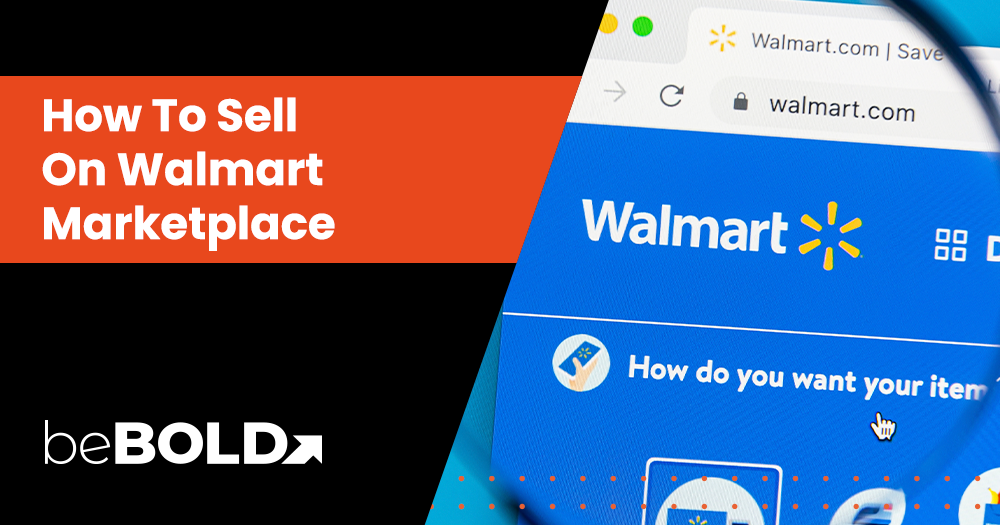Key Summary
- Walmart Marketplace offers small businesses 🎯 an excellent chance to expand their reach, but new sellers may find the process tricky to navigate at first.
- Sellers gain access to powerful tools like real-time sales dashboards, catalog optimization aids, and advertising options to boost visibility and manage growth efficiently.
- Benefits of joining include access to 120M+ monthly visitors, competitive referral fees (6%-15%), strong brand trust, useful seller tools, and less competition due to stricter requirements.
- Compared to Amazon, Walmart provides a less saturated environment, simpler fee structures, a value-driven shopper base 🛒, and flexible fulfillment choices.
- Including Walmart in your multi-channel strategy means tapping into a unique audience, reducing reliance on one platform, and boosting overall sales and brand visibility.
- To qualify, sellers need a U.S. business tax ID, warehouse access, a history of successful sales, proper catalog information, and must meet high product quality and shipping standards.
- New sellers must create an account, provide documentation, set up payment/shipping options 🚚, upload products, and configure policies to start selling.
- The Seller Center dashboard offers essential features like real-time sales data, advertising tools (e.g., Sponsored Products), and promotion managers to optimize performance.
- Success strategies include delivering top-quality products, optimizing listings, leveraging ads, ensuring speedy fulfillment, and maintaining high ratings ⭐ to build brand loyalty.
Walmart Marketplace is an eCommerce platform that can provide small businesses and individual sellers an excellent opportunity to increase their customer reach.
With millions of visitors and customers on the platform, it offers significant potential for sales and exposure for those who know how to sell on it. However, navigating the marketplace as a new seller can be challenging.
Read on for a comprehensive Walmart seller guide on all the requirements to join the program and the best practices for achieving success.

What is Walmart Marketplace?
Walmart Marketplace is an online marketplace platform allowing sellers to sell their products directly to customers.
Sellers on Walmart Marketplace can access various tools and resources to manage their sales and adjust their performance. These include a seller dashboard that provides real-time sales data and performance metrics. It also has tools to aid you in optimizing your catalog, managing orders and inventory, and tracking shipments.
Walmart also offers ways to advertise and market its items to increase visibility and attract shoppers. Working with the company also gives you access to dedicated support to help you navigate the website and grow your business.
What are the Benefits Of Selling On the Walmart Marketplace?
Becoming a seller on Walmart can give you a range of advantages that you may not get on other eCommerce pages, such as:
1. Millions of visitors and customers
Walmart boasts over 120 million monthly unique visitors, making it one of the top marketplaces in the world.
This vast audience means that Walmart Marketplace can provide you with access to millions of visitors and customers who are already shopping online. The increased exposure and reach can result in increased sales and revenue.
2. Competitive fee structure
The program has a competitive fee structure that the company designed to facilitate your pricing structure, especially considering the total sales price of your products. It has no monthly fees; you only pay a referral whenever someone purchases your product. This fee ranges from 6% to 15%, depending on the category.
3. Brand recognition and reputation
Walmart is a well-known and trusted brand with a strong reputation. Because of their audience’s positive association with the company, you can leverage its authority, build up your brand and reputation, and increase customer loyalty.
4. A range of tools and resources
Walmart Marketplace can give you various tools and resources to develop your entries. These include marketing, advertising, inventory management, analytics, and reporting tools.
You can increase your products’ visibility and sales by utilizing these sources well.
5. Minimal competition
The company has stricter rules compared to other eCommerce websites. Its rigorous application process requires you to meet specific criteria, such as having a U.S. business entity, maintaining positive seller metrics, and passing a background check, including a U.S. tax ID.
However, you may also see this as an advantage because it can ensure the quality of products and services and reduce competition. It also means that those who shop on the site may inherently have more trust because of Walmart’s policies.
Walmart vs. Amazon: How is Walmart Different from Amazon?
Walmart Marketplace and Amazon are often the top contenders when deciding where to sell your products online. While both platforms offer excellent opportunities, their audience, seller experience, and overall structure are distinct.
Knowing these differences can help you make an informed decision about which marketplace aligns with your business goals—or whether using both is the best strategy for growth.
Less Saturation on Walmart Marketplace
Amazon is a bustling marketplace with millions of active sellers, making it highly competitive. Walmart Marketplace, in contrast, has a more selective seller base, allowing your products to stand out more easily. This exclusivity provides an advantage for sellers seeking better visibility and opportunities to connect with buyers.
A Rigorous Seller Approval Process
Walmart takes care to maintain high standards by carefully reviewing seller applications. This creates a platform where quality products and professional service take center stage. Unlike Amazon, which has a more open policy, Walmart’s approach fosters a trusted shopping environment that benefits both buyers and sellers.
Simpler, Transparent Fees
Amazon’s fee structure can include multiple charges, such as monthly subscriptions, storage fees, and fulfillment costs, which can quickly add up. On the other hand, Walmart charges only a referral fee on each sale, with no recurring subscription costs. This transparent and predictable structure is especially beneficial for sellers who maximize profitability.
A Distinct Audience: Walmart’s Value-Driven Shoppers
While Amazon caters to a broad audience, including premium shoppers, Walmart is synonymous with value and affordability. Its loyal customer base prioritizes everyday essentials at competitive prices. If your product line appeals to cost-conscious buyers, Walmart is the ideal marketplace to connect with this demographic.
Flexible Fulfillment Options
Amazon’s FBA (Fulfillment by Amazon) program is well-known but comes with high storage fees and other costs. Walmart, however, allows sellers to choose between managing their own logistics or using Walmart Fulfillment Services (WFS). This flexibility gives sellers control over their operations while keeping costs manageable.
Advertising Tailored to Sellers’ Needs
Walmart’s Sponsored Products and in-store advertising options give sellers unique ways to reach Walmart customers online and offline. With fewer sellers competing for advertising space compared to Amazon, Walmart provides an opportunity to achieve high visibility at a lower cost.
Walmart and Amazon each have strengths that cater to different business needs. Walmart’s selective seller base, cost-effective fees, and value-driven audience make it an excellent choice for brands looking to stand out and connect with budget-conscious customers. With its vast reach, Amazon is ideal for those ready to compete in a dynamic, high-traffic marketplace.
Should Walmart Be a Part of Your Multi-Channel Strategy?

Adopting a multi-channel strategy is often the key to sustained growth. Walmart Marketplace can play a crucial role in this strategy, complementing your presence on other platforms like Amazon, eBay, or your own website. But how do you know if Walmart is the right addition to your sales channels? Let’s explore why Walmart should be part of your multi-channel approach.
Access to a Unique Audience
Walmart’s audience is distinct from other platforms, consisting of value-driven shoppers who prioritize affordable, high-quality products. Adding Walmart to your strategy allows you to tap into this customer base, diversifying your reach and ensuring that a broader range of buyers see your products.
Reduced Dependency on a Single Platform
Relying solely on one marketplace, like Amazon, can leave your business vulnerable to sudden policy changes, increased fees, or competition.
Walmart can help mitigate these risks by spreading your sales across multiple platforms, ensuring more stable revenue streams.
Walmart’s Complementary Tools and Resources
Walmart offers tools like Walmart Fulfillment Services (WFS) and Sponsored Products to enhance your operations and marketing efforts, including addressing customer inquiries and improving customer experience. These features not only improve efficiency but also help drive traffic to your listings, making Walmart a valuable addition to your multi-channel toolkit.
Enhanced Brand Visibility
Being present on multiple platforms, including Walmart, increases your established brand’s visibility and credibility. Customers often research products across various marketplaces before making a purchase. A strong presence at Walmart ensures you don’t miss out on potential buyers who prefer shopping there.
Boost Overall Sales Performance
You can significantly boost your overall revenue with Walmart marketplace alongside other sales channels. A multi-channel strategy allows you to cater to different types of customers while taking advantage of each platform’s unique strengths.
Efficient Inventory and Order Management
Modern multi-channel management tools simplify synchronizing your inventory and orders across platforms like Walmart, Amazon, and Shopify. This ensures seamless operations while avoiding overselling or running out of stock.
The Strategic Advantage
Including Walmart in your multi-channel strategy is more than just adding another sales avenue; it’s about building a diversified, resilient business. Balancing your presence across platforms allows you to reach a broader audience and safeguard your brand against marketplace-specific risks.
In your multi-channel strategy, Walmart Marketplace can open new growth opportunities, help you access untapped customer bases, and create a more stable and diversified business model. Whether you’re just starting or scaling your operations, Walmart is a strategic partner worth considering.
Qualifications to Join Walmart Marketplace
Legal and business requirements
- US Business Tax ID
- Form W9 or W8
- EIN Verification Letter from the Department of Treasury
- B2C US-based warehouse or Walmart-approved 3PL fulfillment provider
- History of successful sales through a marketplace or any other eCommerce platform
- Product catalog with GTIN/UPC GS1 Company Prefix Numbers
- Plans for catalog integration
- Product categories, catalog size, and complete information
How to meet Walmart’s seller standards
Product quality
Walmart requires its sellers to provide high-quality products that meet their standards.
These regulations mean you should guarantee that your products are free from defects, damages, and other issues affecting their quality. To do this, you can work with reliable suppliers, use high-quality materials, and perform quality control checks before shipping your products.
Price
Walmart is known for offering competitive prices, and as a seller in the marketplace, you should aim to do the same.
Research your competitors and offer competitive prices that still allow you to make a profit. It’s also imperative to regularly adjust your prices to stay viable in the market and confirm that they align with Walmart’s pricing policies.
Availability of items
The website also stipulates that its sellers need to have a high level of inventory availability to ensure that your audience can find the products they need. You should maintain a sufficient inventory and regularly update your merchandise pages to reflect your current stock to meet this standard.
Shipping time and speed
The Walmart Marketplace places a high priority on fast and reliable shipping, including free shipping options. As a seller, you must guarantee that your shipping times and speeds are fast and reliable. Shipping your products quickly, providing accurate tracking information, and offering reliable delivery options can boost your credibility.
Customer service record
Walmart Marketplace requires its sellers to have a high level of service. You must be responsive to inquiries and complaints, provide accurate and timely information, and resolve issues quickly and professionally.
To meet this standard, you can communicate clearly with customers, offer easy returns and refunds, and prioritize satisfaction.
How to Sell on Walmart Marketplace?

If you want to start selling on Walmart Marketplace, here are the steps to follow:
1. Create a seller account on the platform
First, you need to create a Walmart Marketplace account. To do this, click the “Join Marketplace” button on the Walmart Marketplace website. Follow the prompts to create your account and provide your business email address and information.
2. Fill out an online form and provide documentation
Once you create your account, you must fill out an online form that asks for details about your business, such as your company name, tax ID number, and product categories.
You must also provide documentation, such as your business license and tax identification number.
3. Set up payment and shipping options
After completing the online form, you must set up your payment and shipping options, including shipping templates, in your account. Walmart supports various payment methods, such as credit cards and PayPal. You must also decide on your shipping methods, including shipping rates and delivery times.
4. Upload your product catalog
You can then begin uploading your product catalog to Walmart Marketplace. You can do this manually or by using an integration partner.
5. Configure your settings and preferences
Finally, configure your settings and preferences in your account. These settings include your return policy, managing your orders, and refining your pages to improve your visibility and sales performance.
What is Walmart’s Seller Center?

Walmart’s Seller Center is the company’s all-in-one platform that helps vendors manage their sales and tweak their catalog.
One of its key features is an online seller dashboard that gives you real-time data on sales, orders, and product performance. With this information, you can make data-driven decisions to improve your sales strategies and grow your business.
The Seller Center also offers marketing and advertising tools to help sellers increase their visibility and drive sales. For instance, you can use Walmart Sponsored Products to boost your goods in search results and gain more visibility to potential buyers.
You can also use the Promotions Manager tool to create targeted promotions and discounts to attract your target audience.
Walmart Selling Strategies for Success
As you begin your journey as a Walmart Marketplace seller, here are some strategies you can apply for your brand’s success.
1. Focus on providing high-quality products and customer service
Walmart prioritizes quality and client satisfaction. As a seller on Walmart Marketplace, you should focus on delivering high-quality products and excellent service to keep your patrons happy and returning.
Putting effort into ensuring buyer satisfaction can build a good image and cultivate a dedicated client base, resulting in more sales and profits.
2. Optimize your product listings
Optimizing your product listings for Walmart’s search algorithm is essential to stand out from the competition. These practices include adding relevant keywords, high-quality images, and accurate product descriptions.
By regularly revising your pages, your items will appear higher in search results, increasing visibility and chances to make a sale.
3. Utilize Walmart’s advertising and marketing tools
The program offers various advertising and marketing tools to help you reach a broader audience and increase sales. These include sponsored search advertising, display ads, and Walmart’s Buy Box system. These tools, such as product ads, can improve product visibility and drive more sales.
4. Ensure that your order fulfillment process is efficient and accurate
Walmart prioritizes fast and accurate order fulfillment, so it’s crucial to confirm that your order fulfillment process is efficient and precise.
Ensure you have fast shipping, accurate tracking information, and timely customer communication. A positive fulfillment experience can keep shoppers happy and faithful to your brand.
5. Maintain positive customer reviews and ratings
Positive customer reviews and ratings are essential for extending your reach and potential transactions. Encourage your consumers to leave reviews and respond to negative reviews promptly to address any issues and maintain a respectable standing.
6. Offer excellent customer service
Excellent service is crucial for building a respected status and enhancing customer loyalty. Respond promptly to inquiries and concerns and offer flexible return policies to increase customer satisfaction.
7. Regularly analyze and optimize your performance
Regularly analyzing and optimizing your performance metrics can help you identify areas for improvement. Track your sales, conversion rates, and feedback, and optimize your strategy accordingly.
8. Build a brand presence outside of Walmart Marketplace
Building a brand presence outside the marketplace can help increase your prominence and credibility as a seller. This process includes creating a website, social media accounts, and other marketing efforts to promote your business and products.
Overcome Walmart Marketplace Challenges with beBOLD Digital: Your Partner in eCommerce Success
Selling on Walmart Marketplace presents incredible opportunities, but navigating the platform can be challenging. From understanding the application process and optimizing product listings to completing your account setup and accessing additional resources for managing inventory, and delivering exceptional customer service, the path to success is filled with hurdles. These challenges can feel overwhelming, especially for new sellers or businesses looking to expand their operations.
That’s where beBOLD Digital comes in.
At beBOLD, we specialize in providing end-to-end solutions for sellers on Walmart Marketplace. Whether you need tailored support to help you succeed, our team understands Walmart Marketplace's complexities and provides strategies to tackle every challenge effectively.
Book a consultation call and discover how we can help you succeed on Walmart Marketplace and beyond!
Frequently Asked Questions
What types of products can be sold on Walmart Marketplace?
Walmart Marketplace offers a variety of product categories, including electronics, toys, games, clothing, and more. However, certain items, such as fragrances and seasonal goods, are restricted before you can sell them. Check Walmart's Prohibited Products Policy to ensure your products comply with their marketplace guidelines, as referral fees vary per product type.
How long does it take to get approved as a Walmart seller?
The approval process to become a Walmart seller typically takes 2-4 weeks, especially considering the business verification process. The timeline may vary depending on the completeness of your application and how quickly you provide the necessary documentation.
Can international sellers apply for Walmart Marketplace?
Yes, international sellers can apply to sell on Walmart Marketplace, but they must meet specific requirements. These include having a U.S. Tax ID, a U.S.-based warehouse or access to Walmart Fulfillment Services (WFS), and it’s a good idea to ensure the ability to provide customer support in English. International sellers can tap into Walmart’s vast U.S. customer base by meeting these standards.
What are the fees associated with selling on Walmart?
Walmart Marketplace does not charge monthly subscription fees. Instead, sellers pay a referral fee on each sale, which typically ranges from 6% to 20%, depending on the product category.
For example, clothing and accessories have a 15% fee, while consumer electronics may have a lower rate. This transparent fee structure makes it easier for sellers to manage costs and maximize profits.
How does Walmart Marketplace handle returns?
Walmart allows sellers to set their own return policies but must align with Walmart's overall customer-centric approach. Sellers can handle returns themselves, choose Walmart Fulfillment Services (WFS) to manage the process, utilize Walmart’s Returns Shipping Service for added convenience, or incorporate efficient label printing to streamline the return process.
Customers can return products at any Walmart store or through the mail for items fulfilled by Walmart, ensuring a seamless experience.








Comments